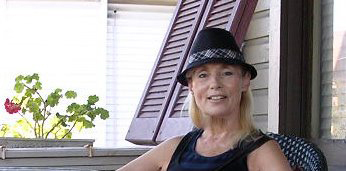Composting: How And Why
COMPOSTING: HOW AND WHY (ISSUE 149) OCTOBER 7, 2014
By Diane Gold
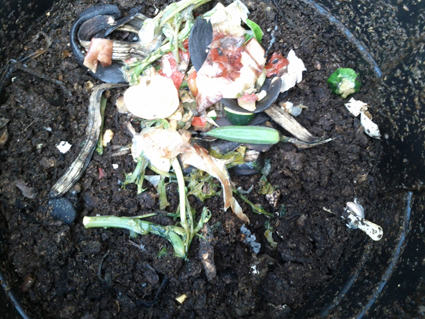 Composting, how and why discusses how easy it is for us to replenish the soil using our raw kitchen waste and why it benefits us to do it.
Composting, how and why discusses how easy it is for us to replenish the soil using our raw kitchen waste and why it benefits us to do it.
So, let’s define composting for those not familiar. It is a method of gathering decayed and decaying plant matter for the purpose of replenishing and fertilizing the soil so that something new has lots of nourishment from which to grow.
Nature composts through the decay of falling leaves, windblown seeds, seed casings, branches, the growth of fungi and microbes. We compost by mixing our vegetable waste with certain carbon-based products to cause the very same process.
WHY COMPOST?
According to Lynn Russell, composter, small garden enthusiast and new friend,
“The main reason to compost is to make your soil alive with all the bacteria and the fungi and beneficial microbes the plant needs and exchanges energy with into the soil. The second reason is that you are imitating nature by using your waste to go back into the soil to make something good rather than just disposing [of] it. Constant recycling… It’s the way the world works. It’s the way nature works.”
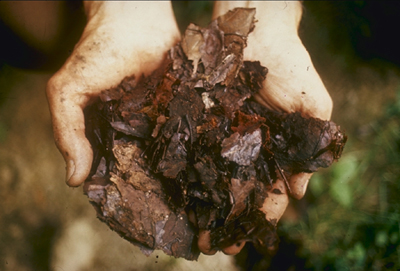
Just a note, by imitating nature, we are using waste and turning it into usable goods, nutrients for the food we grow.
WHO CAN COMPOST?
For those of us who have a garden, we probably have some land on which to place containers in which to compost. For those in suburban apartments, we might have a terrace or outside dumpster next to which to keep a container. For those in urban apartments, like Jen Doll did for 10 days last year while writing a compost article, she put hers in the freezer. She concluded that composting could reduce rats because garbage cans would no longer be overflowing, and monitoring our compostable goods in the freezer could make us more aware of how not to buy more than we can use during the week.
Some people choose to do the whole process. Many people, either through choice, lack of space or location circumstance choose to give their waste to a local farmer.
CARBON FOOTPRINT
According to a 2011 report by epa.gov on reducing greenhouse gas emissions, composting food waste rather than putting it in the land fill has a significant greenhouse gas emission reduction and is a great way to reduce each of our carbon footprints.
PREPARATION FOR PLANT-BASED MATERIALS
So how do we do it? When I asked Lynn about what materials to use, she outlined the process easily. Although I’ve heard this before, I think I got it this time because she broke down the process into the simplest of steps.
CONTAINER PROCESS
1) For those who want to complete the entire composting process starting with a bin and finishing with composted materials, we can follow Lynn’s system:
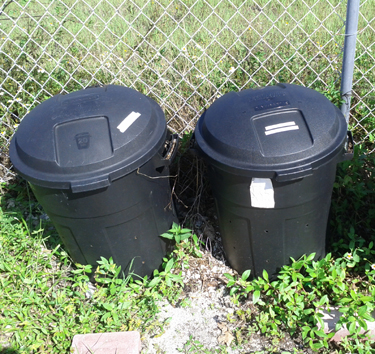
a) the 2 container system.
This consists of 2 – 20 gallon flexible
garbage cans with lids that cost around $14.
b) A $10 shovel to turn the materials.
c) AERATION
On the bottom of each garbage can, drill 8 to 10 – 5/16 inch holes.
10 inches up, drill 8 to 10 (or 1 hole every 8 inches or so) 5/16 inch holes around the circumference of the can.
10 inches up, do the same as the previous step.
2) For those who want to give food waste to a farmer or drop compost at a city or county composting site, all we need do is place the scraps in a container that belonged to some empty produce container, either a shaped plastic container from pre-cut wheatgrass or a pliable plastic bag or paper bag from market and place it in the refrigerator or the freezer. I put mine in the refrigerator. Lynn puts hers in the freezer.
THE 2 CATEGORIES OF STUFF WE USE
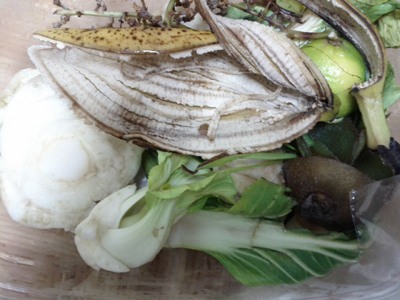
There are 2 types of items we use for our compost.
1) The first is GREENS which provide NITROGEN. These consist of fruits, vegetables, maybe uncooked bread with no spreadable food on it. If any food is rotted from a microorganism, Lynn has recommended to leave it out so the soil is purer. Raw food is best. It also attracts less vermin, if it is outside.
Greens from the lawn can be used if it’s our own lawn (called soft waste). We must be sure there are no pesticides on the lawn greens. Lynn suggests that it’s better to leave it out if the green clippings are sprayed with contaminants of any kind.
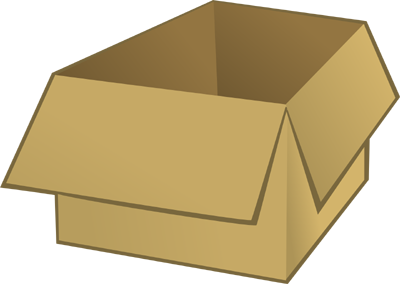
2) Then we have our BROWNS WHICH are CARBONS. This would consist of shredded newspaper and plain brown cardboard. (Sawdust can be used if the wood has not been treated, which is doubtful.) We have to wet the cardboard. Then we need to break it into small pieces which makes it easier for the microbes to get at it.
THE LAYERS
Now comes the good part: the layers, which do not have to be so exact, according to Lynn. She says,
“Some say use more carbon, but it can also be 50-50.”
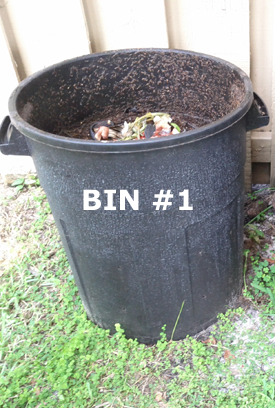
We start with 1 garbage can which we can label as “BIN #1.”
1) We begin with a carbon layer, 6 inches high in the bottom. We just place it in there, no special way.
2) Next, we put our layer of fruit and vegetable waste, 3 to 6 inches.
3) Then, there’s another layer of newspaper and brown cardboard, if we have it.
4) If we do have more, we add another layer of 2) and then 3).
5) Now, it gets exciting. We let it sit, covered for a few days.
6) When it starts decomposing, we use the shovel to turn it.
7) Now, the interesting part. We let it sit and stir it for about 8 weeks, noticing how it changes.
8) When it looks too wet, we add carbons. When it looks too dry, we add greens.
9) When we have 3/4 of a bin full, we can either dump it out into the second bin so that we get to mix what’s on the bottom OR we can start layers in the second bin.
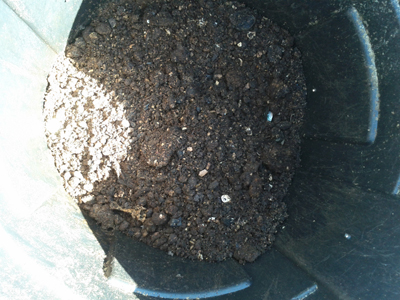
10) When the compost in the bin has broken down and is starting to look like soil, we stop adding to it. We just turn it, let it get dark and finished.
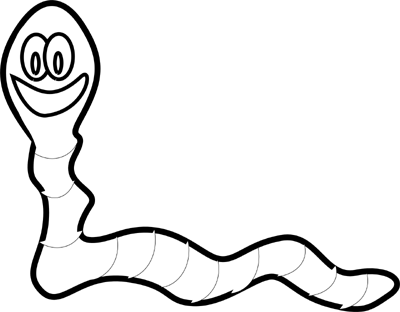
THE SURPRISE
Worms will make their way into the compost pile through the holes that we drilled. Their waste (called castings) is some of the best fertilizer for any soil. They also turn and aerate the soil.
CONCLUSION
I am very respectful of composters. When we have land, it’s not such a big thing to compost. When we have not much more than a terrace, I think it’s courageous. Since I don’t really have a backyard that I can monitor, I give my fruit and veggie waste to Lynn. I am grateful because I have somewhere for my greens to go, other than the garbage can. She is grateful because she can depend upon my weekly layer of greens. And, an added bonus that was not part of the deal, we are becoming friends.
ACTION STEPS
Here are some action steps that you may find rewarding.
1) Buy a tiny 8 ounce can and put holes in it for aeration.
2) Put 3 layers into the can: bottom browns (carbon), about 2 inches, middle greens, about 2 inches, top browns, about 2 inches.
3) Nurture it on the windowsill or near the garbage cans.
4) Stir regularly.
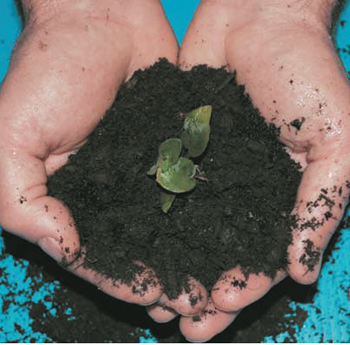
5) When it’s finished,
plant something into that soil.
6) Decide today to do one of the two: start composting regularly or give your food waste to a farmer.
![]()
If you wish to share your story, please hit reply in your email program to be contacted.
![]()
FEEDBACK
We value your feedback very much.
Please leave a comment below.
Please LIKE us on the website
and at WarriorsofWeight .on Facebook.
You can also follow us on Twitter @warriorsoweight.
Thanks.
![]()
DIANE GOLD, PUBLISHER AND AUTHOR
Diane Gold, Founder of Warriors of Weight, Turning Habits Into Health, is a mentor in tai chi, kung fu and meditation, a music, fitness and stress expert, dedicated mom, studying plant-based nutrition, peaceful conflict resolution and habit replacement.
She believes in the power of sustainable education. She believes in educating youth so that future generations can live well. She says,
“Any time we can reduce greenhouse gas emissions, it is good, even if we impact a small bit at a time through composting. The very act of composting shows us life cycle. Being close to this cycle makes us close to understanding. I have no doubt that being close to understanding can bring us peace.
“Finally, let us all take good care of ourselves because we are so worth it!”
![]()

